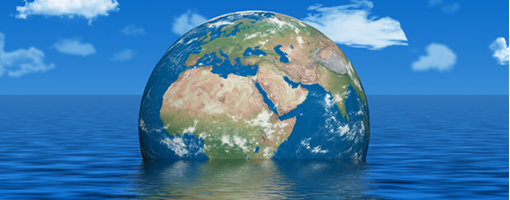Ilonka Oudenampsen reports on how global events have impacted returns in the commodities space
While the unrest in the Middle East and several natural disasters of the past year have caused great concern in many ways, the knock-on effect on commodities has been positive. For example, the geopolitical problems in the Middle East and the nuclear disaster in Japan drove up energy prices, while agricultural commodity prices benefited from droughts and fires in the Ukraine and Russia, and floods in Pakistan and Australia.
Although commodities have been one of the best performing asset classes over the past year, certain commodity types have been doing better than others. Eric Schreiber, head of commodities at UBP, divides commodities into four sectors: agricultural, energy, base metals and precious metals.
He says: “Generally when people speak about commodities they tend to lump everything into one thing, but the sectors are very different and there are very different drivers affecting different types of commodities. For instance, if you’re talking about agricultural commodities, then issues like weather play an important role but don’t necessarily affect commodities like base metals or precious metals. Also, the base metals and energy are much more tied in to the underlying economic trends happening globally.”
Recently, precious metals have been performing well, as they have been behaving much less like commodities and more like currencies or alternative stores
of value. Schreiber explains: “In a fear of currency debasement, people gravitate towards gold, but particularly that’s what’s been happening with silver at the beginning of May. Specifically with gold and silver, we’ve seen an enormous flow out of paper forms of gold and silver, so from financially traded kind of contracts, to real physical ownership.”
Demand from China and Asia is fuelling gold and silver prices further, while emerging markets central banks, like Russia, China, Mexico and Bolivia, are now also buying gold.
However, Stephan Wrobel, director at Diapason Commodities Management, believes that gold and silver’s future is less positive than it has been. “As we expect more synchronised growth for the second part of the year, there will be less appeal for precious metals. They had a good run, but I think they need some kind of consolidation at this stage, so maybe the opportunities are elsewhere in energy and base metals.”
The prospects for energy are indeed good and the energy sector has had a good year. But despite rising oil prices, probably the worst performing commodity until recently was natural gas, due to a change in technology which has unleashed a new supply of natural gas.
Contrary to that though, the earthquake in Japan drove up energy prices, as Japan was a large nuclear power producer, which had to be replaced by liquefied natural gas and some more crude oil imports. Colin O’Shea, head of commodities at Hermes, says: “In terms of the commodities market as a whole, the take out for Japan in the short-term was slightly negative but long-term as the Japan import requirements are larger, the increased demand from Japan should lead to tighter demand-supply balances and hence higher prices.”
Nicolas Robin, co-manager of the Threadneedle enhanced commodities fund, adds: “At the end of 2002, a lot of the nuclear generation in Japan was down, as Tepco had been faking their maintenance reports for their plants for about
20 years. They had to shut down 17 plants for six months and the demand for extra oil rose by about 30%, so the market is much more attractive then it was.”
The earthquake in Japan and especially the situation in the Middle East demonstrated exactly what commodities do for a portfolio in times of stress. They provide protection against event risk and during the unrest in the Middle East, commodities performed strongly and prices rose, particularly in terms of crude oil, due to fears that the Libyan situation could expand to Saudi Arabia and thus have an effect on Saudi supply.
Wrobel adds that the recent financial crisis has shown that the demand growth for the emerging world is strong and resilient, but that there is also a problem on the supply side. “There is demand growth from China, but also Brazil, Eastern Europe and many other South-Eastern countries. But the crisis also accentuated the problem on the supply side, which is that for two to three years the investment was in many cases stopped, slowed down or delayed, and basically as soon as the matter accelerates, we see that the supply side is struggling.”
Although the developed world is very concerned about energy prices, the emerging markets’ vulnerability lies with food prices, which was one of the main reasons for the unrest in North Africa and the Middle East. Demand will remain strong from the emerging markets, meaning that the outlook for agricultural commodities is positive.
Schreiber says: “As the Chinese and the Indians become more affluent and eat more meat, that puts a further strain on crops like soy beans, which are used mainly in animal feed. If you overlay on top of that bad weather and bad growing conditions like we had last year, then it’s almost the perfect storm.”
For future demand, the correction in commodity prices that took place at the beginning of May has also been important. O’Shea feels that this correction is healthy. “The prices as they were in April, where crude oil was maintaining the 120 - 130 dollar area, were having some impact in terms of slow-down in demand. The correction will continue to stimulate demand, albeit at a slightly lower price. But what we certainly like to see going forward is a more steady growth in commodity prices rather than the very sharp price-increases that we saw over the last six months.”
Despite the current opportunities in commodities and their ability to form a hedge against geopolitical risk and inflation, pension funds are still not investing a lot in the asset class. Robin says: “Going forward, because of the correlation between commodity markets and those separate trends of the development of the BRIC countries who are seeing hard commodity prices rising over the long-term, it’s a good place to be.”
Wrobel adds that the geopolitical side of commodities is also very important. “The geopolitical side can affect the price structure and that’s been proven again this year. The tension in the area is rising and it can further develop. Obviously this will come and go, but as a trend geopolitical events will affect commodity prices, and they can protect a portfolio against geopolitical risk.”
Latest News
-
PensionsEurope warns against loss of transparency as it backs Omnibus I
-
Three trends reshaping pension systems worldwide - ETK
-
Denmark’s PFA completes DKK 40bn investment switch
-
News in brief: 12 December
-
NBIM ‘all-in on AI’ as it publishes updated strategy
-
€550bn Dutch pension shift to trigger ‘significant unwind’ of longer-dated bonds
Podcast: Stepping up to the challenge

In the latest European Pensions podcast, Natalie Tuck talks to PensionsEurope chair, Jerry Moriarty, about his new role and the European pension policy agenda
Podcast: The benefits of private equity in pension fund portfolios

The outbreak of the Covid-19 pandemic, in which stock markets have seen increased volatility, combined with global low interest rates has led to alternative asset classes rising in popularity. Private equity is one of the top runners in this category, and for good reason.
In this podcast, Munich Private Equity Partners Managing Director, Christopher Bär, chats to European Pensions Editor, Natalie Tuck, about the benefits private equity investments can bring to pension fund portfolios and the best approach to take.
In this podcast, Munich Private Equity Partners Managing Director, Christopher Bär, chats to European Pensions Editor, Natalie Tuck, about the benefits private equity investments can bring to pension fund portfolios and the best approach to take.
Mitigating risk
BNP Paribas Asset Management’s head of pension solutions, Julien Halfon, discusses equity hedging with Laura Blows
© 2019 Perspective Publishing Privacy & Cookies







Recent Stories